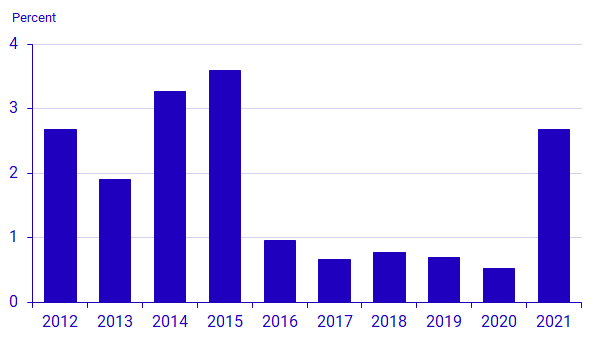Income and taxes 2021
Strong increase in incomes during 2021, but greater inequality
Statistical news from Statistics Sweden 2023-01-25 8.00
After a few years of relatively weak income growth, with the lowest increase in 2020, a stronger development is seen in 2021. At the same time, income inequality, measured by the Gini coefficient, increased sharply during the year according to new statistics on income and taxes for individuals and households.
The median equivalised disposable income, which has increased every year since the mid-1990s, continued to increase in 2021. The median value rose by 2.7 percent, adjusted for inflation, the highest increase since 2015. The increases in recent years have otherwise been lower than in the early 2010s.

To read a more detailed version of this statistical news, click on På svenska (in Swedish).
Definitions and explanations
All results in fixed prices.
Disposable income is the sum of all taxable and non-taxable income less taxes and other negative transfers (such as repaid study loans) of all household members.
The equivalised disposable income is the disposable income of a household divided by the number of household members converted into equalised adults; household members are equalised or made equivalent by weighting each according to their age and position in the household.
Changes of definitions and revised statistics
As of the publication of the income year 2021, an extended household definition and an adjusted equivalence scale with regard to shared residence of children are used in the statistics.
These changes have been implemented from the year 2011, that is, previously published statistics have been revised.
More information about the changes and the effect on the statistics can be found in the documents below.
Statistical Database
More information is available in the Statistical Database
Feel free to use the facts from this statistical news but remember to state Source: Statistics Sweden.
